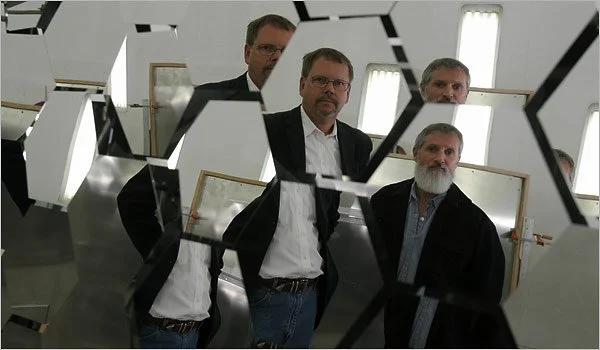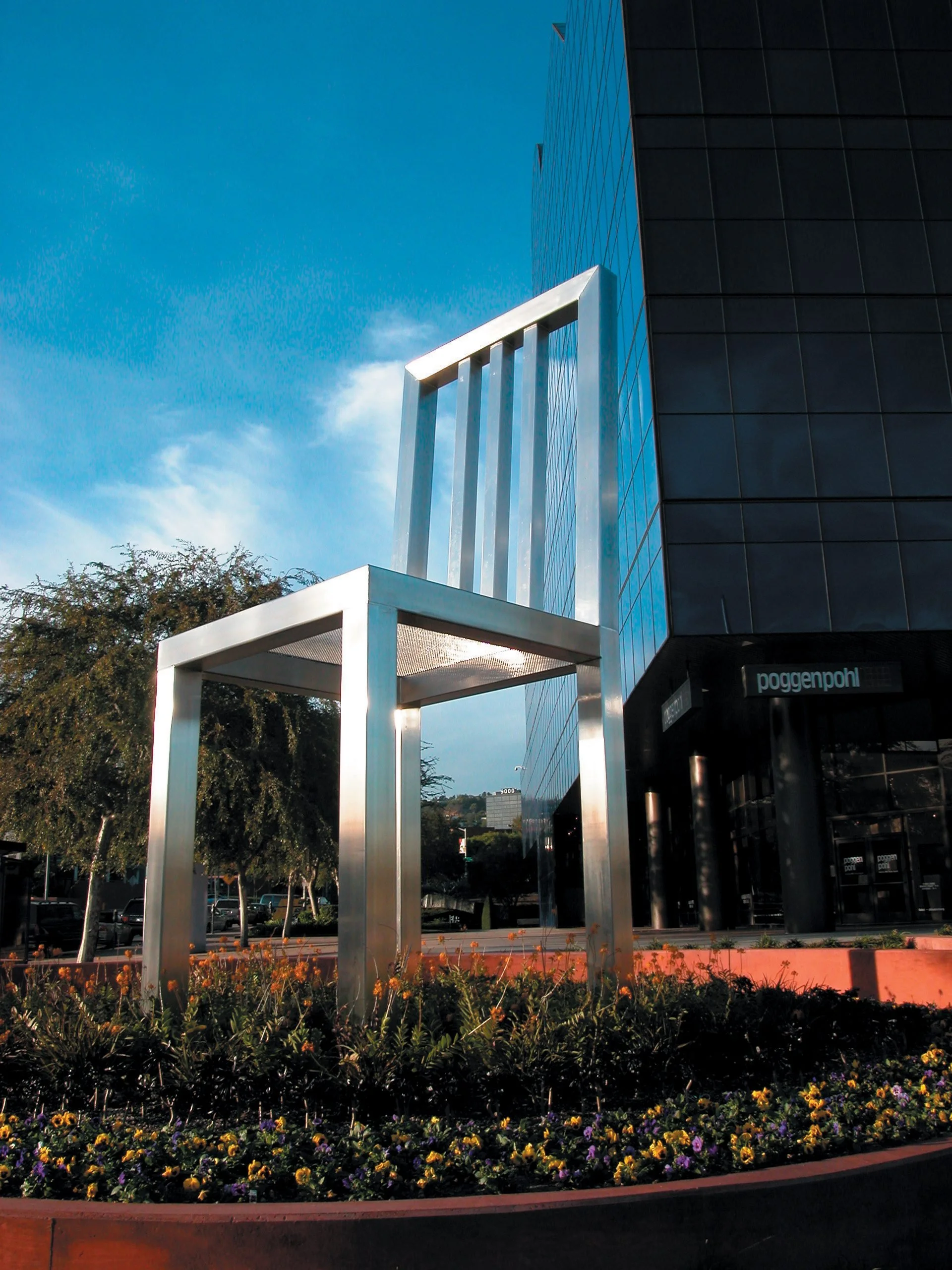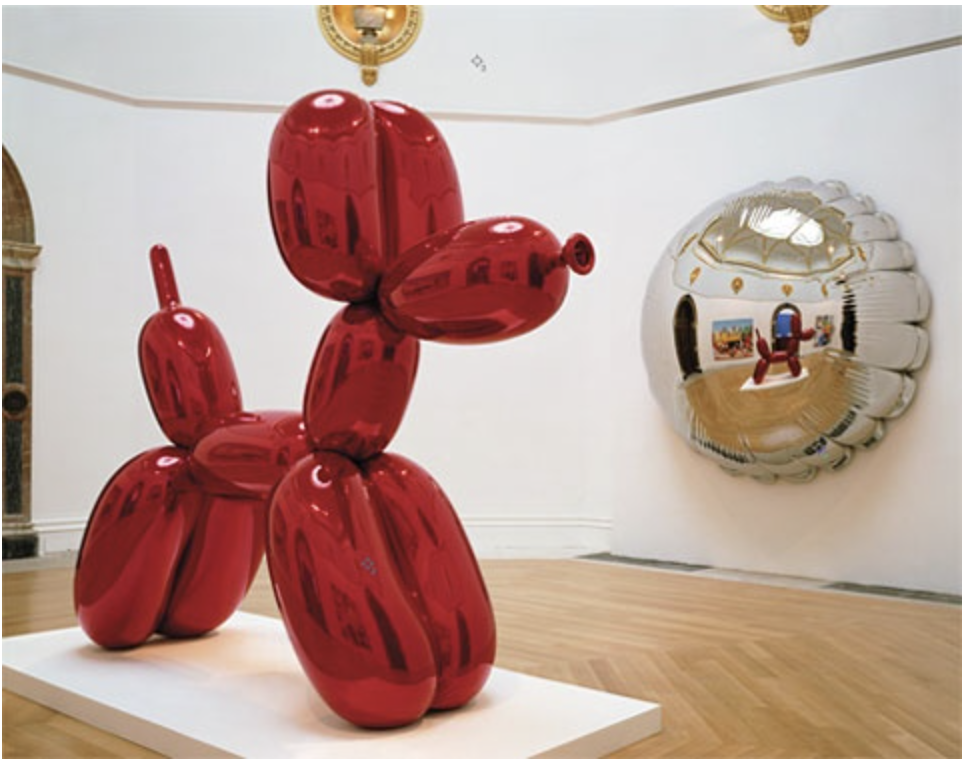The Wizard Behind The Curtain: Carlson And His Company Make Artists’ Visions A Reality
Photo of Peter Carlson via the NYT
by Shasta McBride for THE Magazine, 2009
From the eco-designed BP gas station on Olympic and Robertson to Jeff Koons’ Balloon Dog at the Los Angeles County Museum of Art to the large stainless steel chair by design firm Selbert Perkins outside the Pacific Design Center, Carlson and Company’s iconic installations have become Los Angeles monuments. The fabrication company, located in the city of San Fernando, enjoys global renown as the builder of immense and intricate structures designed by some of the world’s most prominent artists.
Carlson and Co. works industrial-strength magic on ambitious artistic concepts, bringing otherwise impossible ideas to fruition. Who is the wizard behind the curtain? Humble and congenial, sixty-year-old Peter Carlson is the man in the background who can transform high-concept ideas into larger-than-life reality. For nearly four decades Carlson has challenged our notions of what’s achievable, pushing the bar ever-higher as technology advances.
Peter Carlson started his career at pioneer West Coast edition publisher Gemini G.E.L. in the late 1960s before going out on his own in 1971. Over the decades he has worked with artists such as Claes Oldenburg, Ellsworth Kelly, Isamu Noguchi, John McCracken, and Robert Therrien, developing the skills only a handful of people in the world can offer artists who seek to build technically challenging works. Not only does Carlson deliver the ingenuity, technical skill, and extreme respect required, he connects intimately and respectfully with each artist’s vision.
“As fabricators, we should really be creating zero resistance to the artist,” Carlson says. “We don’t influence, we just create for him, we make it happen for him.” He considers many of the artists he works with to be lifelong friends, and feels that without such shared closeness he wouldn’t be “able to [be] an extension of them to produce the artwork.”
Carlson’s team includes innovative thinkers and doers from many varied backgrounds — out of the aerospace industry and out of art school, with master’s degrees or high school degrees, from the lab or right off the street— but all have two things in common: the desire to solve problems and the tacit agreement to keep their own artistic fingerprint off the works they fabricate. Carlson describes his employees as having “a neutral-ness to their execution and [a] desire to really want to do whatever that piece of art is and not influence it.”
It took Carlson’s company almost five years to figure out how to fabricate Jeff Koonses first 10-foot high Balloon Dog from his popular Celebration series. Two other companies had already tried, and failed. After Koons made the full-size object in his studio, Carlson had to figure out how to cast it in stainless steel and assemble the tail, legs, and body without any trace of welding. He compares this process to sticking the side of a popsicle stick into a cake and then smoothing over the stick with frosting, getting the frosting to leave no trace of the popsicle stick beneath. The smooth finish on the steel proved daunting, as his people were dealing with the “thickness of paper.” Carlson hired a chemist to help them invent a transparent adhesion that would get that beautiful candy-blue color to stick— and had to determine how to get the color completely even on all parts of the sculpture. It was an unprecedented achievement.
At present, Carlson is involved in a Koons project so monumental that the fabricator compares it to the Eiffel Tower. The artist proposes to hang a replica of a 1943 Baldwin train engine nose down, pendulum-like, from a 161-foot-high crane on special order from Germany. The train will steam, lower, and rise three times a day. Koons — like so many of his fellow artists— thus pushes the doable to the limits. But achieving the improbable is nothing new to Carlson; after an extensive feasibility study, his company continues to work on the absurdly dangling train, set for installation at LACMA around 2010.
But building the art is only the beginning. Carlson and Co. also handles worldwide shipping of the art they fabricate, dealing with myriad problems as unusual as those posed by the fabrication itself. The surfaces of artworks fabricated for Adi Da Samraj’s collateral exhibition at the 2007 Venice Biennale, for instance, were so fragile that they literally could not be touched. So Carlson devised metal edge protectors and special crating that allowed the works to withstand shipment from L.A. to Venice, a barge ride up tiny canals, airlift by crane, and passage through a tiny window a few stories high into the rented palazzo.
Carlson and his crew know only too well how easily a work of art can get lost like misplaced luggage if left in the hands of others. They learned the hard way in the 1980s, when they discovered an Isamu Noguchi sculpture left in the back of a trailer truck for a month at a trucking hub in Kansas.
Lesson learned, the company now handles all the logistics of getting pieces delivered and installed, sending their own crew or supervising their on-site installation.
Charles Ray, Father Figure, Matthew Marks Gallery
One recent heroic delivery was Charles Ray’s Father Figure, an 18-ton solid stainless steel replica of a toy tractor Carlson fabricated and sent from Los Angeles to Manhattan’s Matthew Marks Gallery. Father Figure required seven different milling centers to manufacture its components in time, a computerized spinning cutter shaping the pieces that Carlson’s people then cosmetically welded together. Carlson describes the paint on Father Figure “as fragile as the paint on your car.
” It took a small army to ship the work on a multiple-wheeled trailer truck, and needed special permits, licenses, and a cross-country route specified by the Department of Transportation so that no bridges broke beneath the weight.
He does face monetary prohibitions, of course. An art student on a school tour of the facility once asked if it would be possible to make a 40’ x 40’ x 4’ glass sculpture. Intrigued, Carlson looked into it, but discovered that no one makes glass large enough. Large mirrors are made for telescopes, but nothing that large. The matter still seems to concern him.
“Well, I mean, maybe if we did this, this and this, and we spent a hundred million dollars on a facility, we might be able to do it.
”Money is as real a component in these large art pieces as the fabrications themselves. It’s a constant balancing of cost to creation of the work,” Carlson admits.
Peter Carlson and his company are high-concept problem-solvers who are truly as important to the current art scene as today’s A-list artists.



